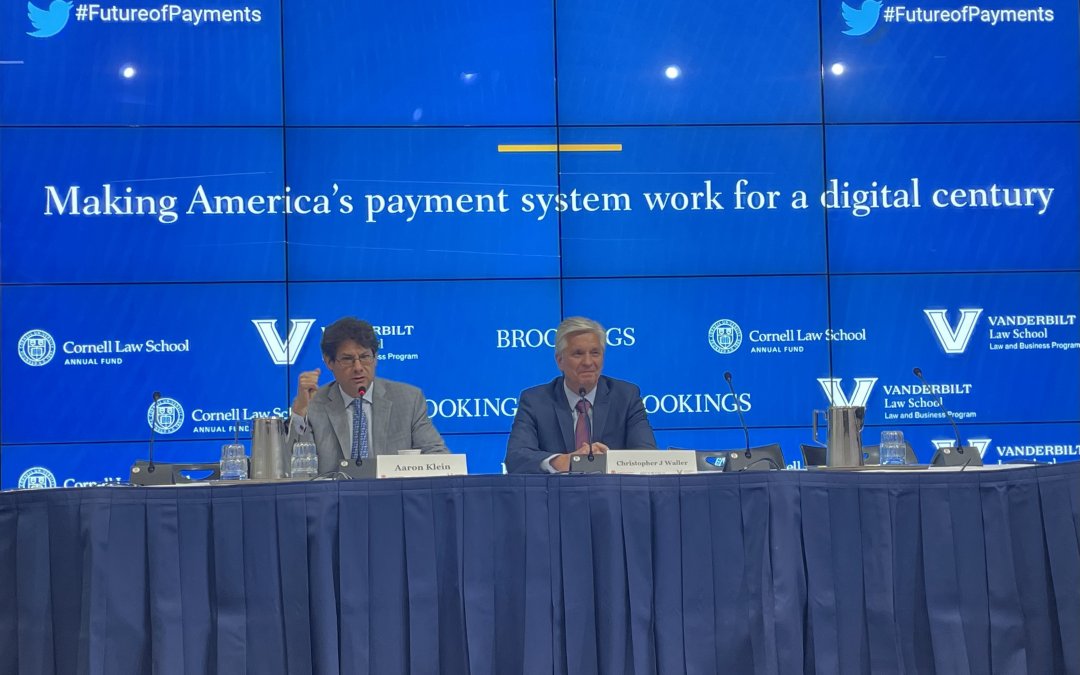WASHINGTON — When American consumers deposit checks, they often wonder why it can take days to access their money even with all the modern technology that should be able to verify and transfer funds quickly. The Federal Reserve has introduced a new system to fix this, but its implementation is taking longer than expected because member banks are being slow in adopting the system.
If fully integrated, the system called FedNow would allow consumers to make payments quickly and securely while avoiding overdraft fees which accounted for $7.72 billion of bank revenue in 2022.
“If customers demand it, the bank will make the investment and [use FedNow], and if you are unhappy with your bank and whatever fees, go get another one. That’s the way things work,” Federal Reserve governor Christopher Waller said on Friday during a panel at the Brookings Institution.
FedNow, a real-time payment service launched in July designed to reduce transactions from days to seconds, could help accelerate the economy and help consumers, Waller said.
More than 100 banks have begun using the technology since its launch three months ago but most have opted to only use the service to receive payments. This limited adoption has prompted much crticism for the way the Fed has gone about implementing it.
“I think FedNow is going to fail,” Dan Awrey, professor of law and finance at Cornell University, said on the panel. “If I tried to imagine a system that was designed not to work, not from a technological perspective but from a governance perspective, we’re pretty close to it.”
As even the moderator of panel, Aaron Klein, noted banks have no incentive to switch from their current or any privately developed payment methods to FedNow. Most banks make a significant portion of their profit from overdraft fees and would likely not consider forgoing that revenue to use the government’s centralized service, said Klein, a senior fellow at Brookings.
Waller said the Federal Reserve acknowledges these criticisms but does not see them as a significant obstacle. He added that the Federal Reserve plans on taking a hands-off approach to the implementation of FedNow and would rather let the technology speak for itself, letting banks and consumers decide.
One thing critics and proponents of FedNow were able to agree on is that it has no intention of becoming a central bank digital currency (CBDC) designed to restrict consumers purchasing power, and other false claims leveled by some, including presidential candidates like Robert F. Kennedy Jr. and Ron DeSantis. Waller explained that the program is just a method of transferring funds faster with no ulterior motive.
Waller was also critical of countries and organizations that have started using or are considering using a CBDC, like China, the Bahamas, the UK and the European Central Bank. He said instituting a CBDC does not solve a major market failure, nor would a CBDC be the only way to address such a significant problem.
Another panelist, Consumer Financial Protection Bureau director Rohit Chopra, expressed privacy concerns for this technology. Chopra said using a CBDC, whether privately or publicly operated, puts user data at risk.
“There has been concern both in the U.S. and abroad about the relationship between Chinese tech giants and governmental entities including with respect to the sharing of sensitive user data and censorship,” Chopra said.
Chopra said the CFPB is poised to crack down on companies stealing user data to prevent excessive surveillance and censorship. But the CFPB’s ability to do this may be hindered as the bureau’s constitutionality, such as through a case the Supreme Court took up last week, Consumer Financial Protection Bureau v. Community Financial Services Association of America.


